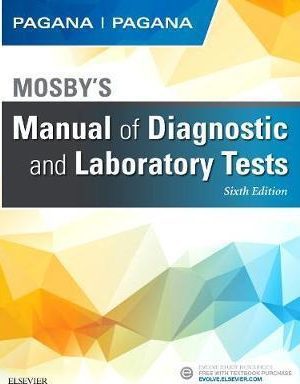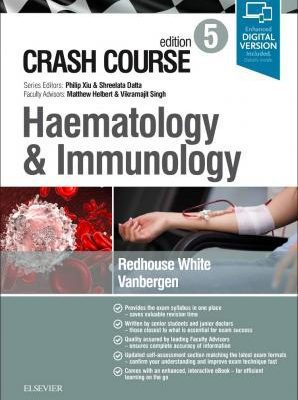Clinical Immunology and Serology: A Laboratory Perspective 4th Edition
Clinical Immunology and Serology: A Laboratory Perspective Fourth Edition:
∗ eText ISBN: 0803667086, 978-0803667082, 9780803667082
Table of Contents
SECTION I: Nature of the Immune System
1 Introduction to Immunity and the Immune System
Immunity and Immunization
Innate Versus Adaptive Immunity
Cells of the Innate Immune System
Cells of the Adaptive Immune System
Organs of the Immune System
2 Nature of Antigens and the Major Histocompatibility Complex
Factors Influencing the Immune Response
Traits of Immunogens
Epitopes
Haptens
Adjuvants
Relationship of Antigens to the Host
Major Histocompatibility Complex
3 Innate Immunity
External Defense System
Internal Defense System
4 Adaptive Immunity
T-Cell Differentiation
Stages in B-Cell Differentiation
The Role of T Cells in the Adaptive Immune Response
The Role of B Cells in the Adaptive Immune Response
Laboratory Identification of Lymphocytes
5 Antibody Structure and Function
Tetrapeptide Structure of Immunoglobulins
The Nature of Light Chains
Heavy-Chain Sequencing
Hinge Region
Three-Dimensional Structure of Antibodies
Theories to Explain Antibody Diversity
Genes Coding for Immunoglobulins
Monoclonal Antibody
6 Cytokines
Introduction to Cytokines
Cytokines in the Innate Immune Response
Cytokines in the Adaptive Immune Response
Th17 Cytokines in Innate and Adaptive Immune Responses
Hematopoietic Growth Factors
Cytokine and Anticytokine Therapies
Clinical Assays for Cytokines
7 Complement System
Pathways of the Complement System
System Controls
Complement Receptors and Their Biological Roles
Biological Manifestations of Complement Activation
Complement and Disease States
Complement Deficiencies
Laboratory Detection of Complement Abnormalities
SECTION II: Basic Immunologic Procedures
8 Safety and Quality Management
Laboratory Hazards
Quality Management
Regulatory Issues
Quality Management Systems
9 Principles of Serological Testing
Blood Specimen Preparation and Measuring
Dilutions
10 Precipitation and Agglutination Reactions
Antigen–Antibody Binding
Precipitation Curve
Measurement of Precipitation by Light Scattering
Passive Immunodiffusion Techniques
Electrophoretic Techniques
Comparison of Precipitation Techniques
Principles of Agglutination Reactions
Types of Agglutination Reactions
Instrumentation
Quality Control and Quality Assurance
11 Labeled Immunoassays
Formats for Labeled Assays
Heterogeneous Versus Homogeneous Assays
Radioimmunoassay
Enzyme Immunoassays
Fluorescent Immunoassays
Chemiluminescent Immunoassays
12 Molecular Diagnostic Techniques
Characteristics of Deoxyribonucleic Acid and Ribonucleic Acid
Molecular Analysis
DNA Sequencing
13 Flow Cytometry and Laboratory Automation
Cell Flow Cytometry
Immunoassay Automation
SECTION III: Immune Disorders
14 Hypersensitivity
Type I Hypersensitivity
Type II Hypersensitivity
Type III Hypersensitivity
Type IV Hypersensitivity
15 Autoimmunity
Etiology of Autoimmune Disease
Systemic Autoimmune Diseases
Organ-Specific Autoimmune Diseases
16 Transplantation Immunology
Histocompatibility Systems
Allorecognition
Transplant Rejection
Graft-Versus-Host Disease (GVHD)
Immunosuppressive Agents
Clinical Histocompatibility Testing
17 Tumor Immunology
Introduction to Tumor Biology
Tumor Antigens
Clinically Relevant Tumor Markers
Laboratory Detection of Tumors
Interactions Between the Immune System and Tumors
Immunoediting and Tumor Escape
Immunotherapy
18 Immunoproliferative Diseases
Malignant Transformation of Hematologic Cells
Classification of Hematologic Malignancies
Leukemias
Lymphomas
Plasma Cell Dyscrasias
Role of the Laboratory in Evaluating Immunoproliferative Diseases
19 Immunodeficiency Diseases
Clinical Effects of Primary Immunodeficiencies
The Nine Categories of Primary Immunodeficiencies
Laboratory Evaluation of Immune Dysfunction
SECTION IV: Serological and Molecular Diagnosis of Infectious Disease
20 Serological and Molecular Detection of Bacterial Infections
Human–Microbe Relationships
Bacterial Virulence Factors
Immune Defenses Against Bacterial Infections and Mechanisms of Evasion
Laboratory Detection and Diagnosis of Bacterial Infections
Group A Streptococci (Streptococcus Pyogenes)
Helicobacter Pylori
Mycoplasma Pneumoniae
Rickettsial Infections
21 Spirochete Diseases
Syphilis
Lyme Disease
Relapsing Fever Group—Borrelia Miyamotoi
22 Serological and Molecular Diagnosis of Parasitic and Fungal Infections
Parasitic Immunology
Fungal Immunology
23 Serology and Molecular Detection of Viral Infections
Immune Defenses Against Viral Infections
Viral Escape Mechanisms
Laboratory Testing for Viral Infections
Hepatitis Viruses
Herpes Virus Infections
Other Viral Infections
24 Laboratory Diagnosis of HIV Infection
HIV Transmission
Characteristics of HIV
Immunologic Manifestations
Clinical Symptoms of HIV Infection
Treatment and Prevention
Laboratory Testing for HIV Infection
Screening and Diagnosis
Disease Monitoring
Testing of Infants Younger Than 18 Months
25 Immunization and Vaccines
Vaccines
Passive Immunization
Adoptive Immunotherapy
Glossary
References
Answer Key
Index
























 Dentistry
Dentistry
Reviews
There are no reviews yet.